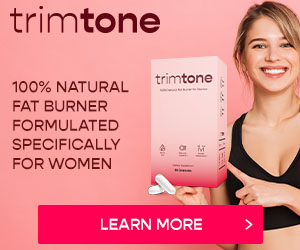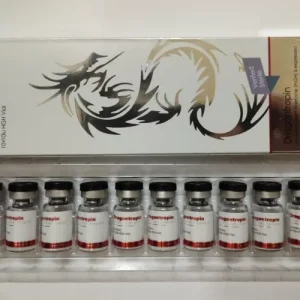Steroids
Powerlifting Vs Power Building: Find Out the Big Difference and When to Shift Between the Two
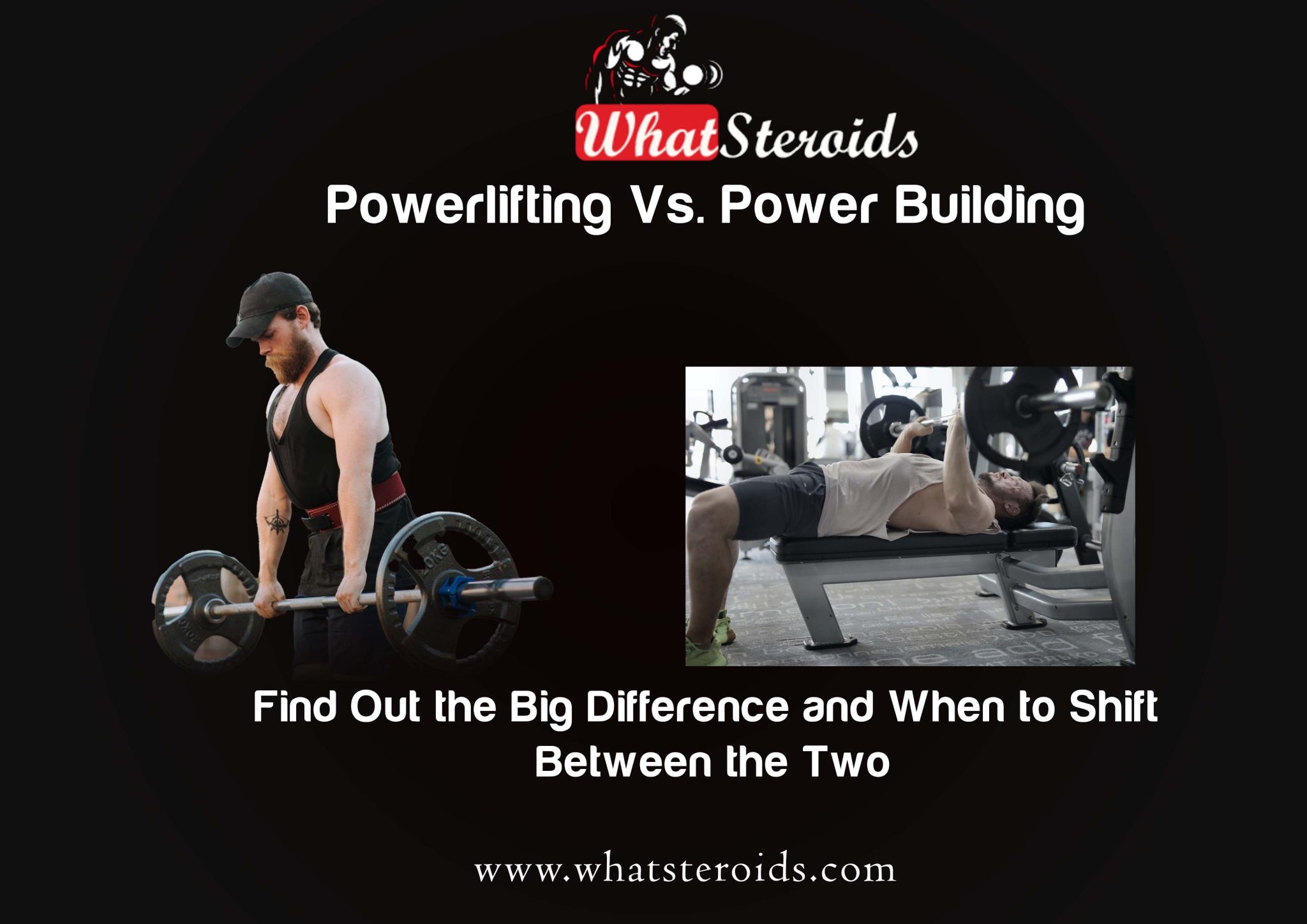
Powerlifting and power building are two distinct forms of weightlifting with different goals and techniques. While powerlifting is focused on maximizing strength, power building is more about increasing muscle size and aesthetics.
In this article, we will explore the differences between these two forms of weightlifting and discuss when it’s best to switch from one to the other. We will also look at some tips for making the transition easier and more successful.
What is Powerlifting?
Powerlifting is a strength sport that consists of three main lifts: the squat, bench press, and deadlift. Powerlifters often use lower-weight loads and perform multiple reps to increase their strength.
For example, some powerlifters might squat 225 lbs for 10 repetitions using a sumo stance (the wide-legged stance most people know when performing the squat). The number of repetitions performed in each lift can vary from 1-5 depending on the lifter’s goals or experience level. When powerlifters compete against one another, their squat and bench press maxes are often considered. Powerlifters typically wear supportive, high-quality gear and lifting shoes with a flat springy sole.
The gear helps to prevent injuries when lifting heavy loads and provides needed support for the body. Powerlifters often have a platform (a triangular wooden frame) welded to the back of the squat rack, which they use during squats to help balance themselves during heavy sets. Bench pressing can be performed in the squat rack or on a bench.
Why Squat Racks?
Squat racks are easier and safer because you can use them without worrying about getting the bar in your eyes or having it come forward and hit you in the head. Trap bar training ("dual-opposition training") is often done with a trap bar attached to pegs on both sides of a squat rack to grant more stability than any one-handed implement. It also permits more freedom of movement than an Olympic lifting apparatus since there are no cross handles for precise bar positioning.
Proper Powerlifting Strategies
In use, it is placed in front of the lifter at a distance from each end, and the lifter grasps it with an overhand grip. The lifter's hands are placed just outside shoulder width, elbows slightly bent, and feet shoulder-width apart. The bar is lifted by pushing underneath its middle (the area right under the hands) with the feet while keeping both feet flat on the ground, effectively raising it without moving them laterally one iota. The bar should be pulled upwards until a slight tension can be felt in both triceps and biceps. A common variant of this movement is the shoulder press, which uses more weight and involves a greater range of motion.
The barbell shoulder press is performed by grasping a barbell with hands just outside shoulder width and then thrusting the body backward, raising the weight off the ground until the arms are straight. The movement is stopped when a slight tension can be felt in both triceps and biceps.
Power Building for bodybuilders is an essential component of any successful bodybuilding routine. It combines strength training, endurance training, and nutrition to maximize muscle growth and strength gains. Power Building for bodybuilders focuses on developing the core lifts such as squats, bench presses, deadlifts, and overhead presses.
It also includes exercises that target specific muscle groups such as biceps and triceps. Proper nutrition is also an important factor in power building for bodybuilders as it helps to fuel the muscles with the necessary nutrients for optimal performance. With a well-rounded program that combines all these elements, bodybuilders can achieve their goals of gaining strength and size while maintaining a healthy lifestyle.
The Power Building program is used by strength and conditioning coaches to develop muscle mass, strength, explosiveness, and body composition in athletes. This program can also be used for weightlifters seeking increased performance in the weight room. The program is split into three phases. The first phase lasts 8 weeks, the second lasts 16 weeks, and the third lasts 20 weeks. This program aims to help increase muscle mass, improve strength, and reduce body fat.
Must Read: Post Cycle Therapy Vs. B&C: Which is Best for You?
Phase One
This phase lasts 8 weeks. Each workout routine is divided into three movements: push, pull, and squats. You will always do two sets for each exercise, except push presses which are done as a single set. The first week will begin with two exercises for each muscle group and decrease to one exercise per muscle group by week four.
Then you will be back up to two exercises again by week eight before continuing from there with 1 movement per day until the end of Phase 3.Phase 1: Starting StrengthWeek 1-2Push Presses: 3 sets of 8 Push Ups Pull-Ups: 3 sets of 12 chin ups/dips Squats: 3 sets of 15, 10 reps Deadlifts: 3 sets of 10 reps Standing Military Presses (3-sec hold at top): 6 sets of 6 reps each week.
Week 3-4Push Presses: 4 sets of 8 Push Ups Pull-Ups: 4 sets of 12 chin ups/dips Squats: 4 sets of 15, 10 reps Deadlifts: 4 sets of 10 reps Standing Military Presses (3-sec hold at top): 8 sets of 6 reps each week
Phase 2
Starting Strength , then adding weight each weekWeek 5-6Push Presses: 5 sets of 8 Push Ups Pull-Ups: 5 sets of 12 chin ups/dips Squats: 5 sets of 15, 10 reps Deadlifts: 5 sets of 10 reps Standing Military Presses (3 sec hold at top): 10 sets of 6 reps each weekWeek 7-8Push Presses: 6 sets of 8 Push Ups Pull-Ups: 6 sets of 12 chin ups/dips Squats: 6 sets of 15, 10 reps Deadlifts: 6 sets of 10 reps Standing Military Presses (3 sec hold at top): 12 sets of 6 reps each weekWeek 9-10Push Presses: 7 sets of 8 Push Ups Pull-Ups: 7 sets of 12 chin ups/dips Squats: 7 sets of 15, 10 reps Deadlifts: 7 sets of 10 reps Standing Military Presses (3 sec hold at top): 14 sets of 6 reps each week.
Strength in Powerlifting
Bodybuilding is a sport that requires a lot of strength and power. Powerlifting is an important part of bodybuilding, as it helps to build muscle and increase strength. But how are bodybuilders able to power lift frequently? The answer lies in their training techniques and their dedication to the sport.
Bodybuilders use a variety of exercises and techniques to be able to power lift frequently. They focus on building strength by doing compound exercises such as squats, deadlifts, bench presses, and overhead presses. They also ensure they get enough rest between workouts so their muscles can recover properly.
Additionally, they eat a diet high in protein and other nutrients that help build muscle mass quickly. All these factors combined help them be able to power frequently lift without feeling tired or overworked.
Why Powerlifting Alone Cannot Build A Strong Body
Bodybuilders have high levels of testosterone, which is a muscle-building hormone. They also make sure they get enough rest. Bodybuilding is an effective way of building muscle mass quickly because it puts people in an anabolic state, where their body is not breaking down or being used up for energy. This means that regardless of the time spent on training, the bodybuilder will still grow and maintain muscle mass. Many studies show this to be true, and athletes using those techniques can achieve their goals faster than those who don't regularly use them.
Powerlifting is essential to bodybuilding and can help you reach your goals faster. It is a great way to build strength and muscle mass while improving your fitness.
Powerlifting tips can help you maximize your gains and reach your desired physique if you are a bodybuilder. Here are some powerlifting tips to help you get the most out of your workouts and stay safe while lifting weights.
If you haven't done powerlifting before, prepare by doing some simple strength training exercises. Try kettlebell swings, pushups, or pull-ups. Also, don't forget to stretch before and after your workouts. Focus on a limited number of exercises per body part and work those different muscles in each workout. For example, do bench presses Wednesdays and deadlifts Fridays to target the chest and back, respectively, at the same time each week.
Alternating Between Different Muscles
On Saturday, alternate between one-arm barbell rows for the back muscles with squats for quadriceps muscles such as legs. Work out for about 30 minutes before taking a break for about 10-15 minutes. If you must take longer than 15 minutes, do it in two 5-minute sessions. Aim to do your exercise within 4-6 reps per set. This allows you to use heavier weights and build muscle over time without burning out quickly. Do not work the same body part two days in a row (unless it's a rest day). For example, you should not work your chest on Wednesday and again on Friday, as this will cause muscular imbalance and overcompensation.
Perform one set for each muscle group, working each muscle once or twice per week. You should take a day off every week to allow muscles to recover and build strength.
For those looking to get into the fitness world, there is often a debate between building muscle and powerlifting. While both have advantages, deciding which is right for you can be difficult. That's why it's important to understand the differences and how they can be used together to achieve your fitness goals. By understanding the differences between building muscle and powerlifting, you can find a balance that works for you and helps you reach your goals faster.
The Science Behind Building Muscle
Building muscle is a process where your body slowly builds up the size of individual muscle fibers. This process can take anywhere from 8-12 weeks, but most people see their results after 6-8 weeks. Building muscle is to increase your overall strength and build a toned physique rather than adding pounds of weight to your muscles.
Muscles are built by creating microscopic tears in the muscle fiber, which are then repaired by satellite cells. For this growth to happen, you need a lot of protein and carbohydrates to feed your muscles while they recover from workouts. I'm doing this for many reasons.
Powerlifting is a strength-based sport that requires skill, technique, and dedication. It is a great way for professional bodybuilders to stay in shape and increase their muscle mass. Powerlifting can help pro bodybuilders reach their goals faster by increasing their strength and endurance. It also helps them build muscle mass quicker than traditional weight-lifting exercises.
Powerlifting For Pro Bodybuilders
Powerlifting by pro bodybuilders can be an effective way to achieve the desired fitness level, as it allows them to lift heavier weights than they would normally do with traditional weight-lifting exercises. Additionally, powerlifting helps pro bodybuilders develop more explosive power, which can help them in competitions. Furthermore, powerlifting can also help improve coordination and balance, which are important skills for any athlete.
Weightlifting is a sport; to achieve the best performance possible, it requires specific training and diet. Bodybuilders often choose weightlifting to improve their lower body strength which helps them lift more weight than they would be able to with bodybuilding exercises. Additionally, weightlifting helps pro bodybuilders develop more endurance and power while using less energy.
Powerlifters compete against each other in timed events where the object is to either complete a certain amount of repetitions with a specific amount of weight or move the barbell from point A to point B with maximum intensity. While this type of training is similar to that of bodybuilding, those who compete in powerlifting don't have to build up their muscles through progressive resistance training. as they are not concerned with aesthetics.
By contrast, powerlifters compete in events from a squat to a bench press, where the object is to lift as much weight as possible and most efficiently. They might have a maximum weight of 25kg for the squat and 165kg for the bench press. They will finish those events by completing one repetition or moving their bodies from point A to point B with maximum intensity, respectively.
Related Article: Olympic Lifting: 25 Strategies That Work
The Big Difference
Powerlifters train similarly to bodybuilders by increasing their muscle mass through progressive resistance training over time by lifting heavier weights to hit intense lifts like squats and benches regularly. Athletes often have a challenge to complete within a certain time limit, such as deadlifting 250 pounds within 30 seconds or completing 20 pull-ups in 2 minutes. In these cases, the athlete would compete by completing one repetition of the event or moving their body from point A to point B with maximum intensity respectively.
Reverse Pyramid Training is most commonly used in powerlifting and Strongman competitions. Athletes will repeat the same weight for four sets of five repetitions at 80% of their 1rm with short rest periods between each set, also known as a "reverse pyramid."Powerlifters will complete a bench press workout consisting of three sets with 8-12 repetitions at 70% of their 1rm with short rest periods between each set; this is also known as a "reverse pyramid" bench press. What are the benefits of reverse pyramid training?
Benefits for Athletes
The athlete will experience a greater training effect due to their system’s ability to recover from each successive set; as they progress in strength, they can perform each set with more weight and volume, rather than starting at 100% of their 1rm and working down.- As the load increases throughout the workout, so does intensity. Athletes typically do not feel as much fatigue towards the end of a workout as if they did not take rest periods between sets. Reverse pyramid workouts that target hypertrophy typically last around 45 minutes and have anywhere from 10 to 20 sets. Rest periods between sets typically last about 30 seconds, but athletes should take rests as long as needed.
Building more muscle through powerlifting and dieting can be a daunting task. But with the right knowledge and dedication, anyone can do it. Powerlifting is an effective way to build strength, while proper nutrition is essential for muscle growth. This article will discuss the best practices for powerlifting and dieting to help you build muscle mass quickly and effectively. We will also discuss combining these two disciplines to maximize your gains.
Powerlifting
Powerlifting is a strength sport where you perform repetitive and standardized holds at maximal weights. Throughout the competition, the athlete or lifter will try to accumulate as much weight as possible on their back while completing the most repetitions. There are currently three total powerlifting disciplines: Olympic lifting, strongman lifting, and powerlifting.
Each of these three disciplines consists of six lifts: The squat, deadlift, bench press, shoulder press (deltoid), military press (latissimus dorsi), and pull-up. An individual could compete in one or all three disciplines. Olympic lifting is a sport where athletes attempt to lift as much weight as possible using different techniques.
Olympic Events to Powerlift
There are two Olympic lifting events: the snatch and the clean and jerk. The snatch is performed when an athlete, starting from a dead stop, continuously lifts a barbell from the floor to overhead by contracting both arms above their head. The clean and jerk are performed when an athlete cleans a barbell (grabs it with one hand), then jerks it overhead with both arms at once by contracting their legs behind them.
Strongman competition involves strongmen performing feats of strength in various implements, including stone lifting, tire flipping, keg holding, and sandbag carrying. There are two Olympic lifting events: the snatch and the clean and jerk. The snatch is performed when an athlete, starting from a dead stop, continuously lifts a barbell from the floor to overhead by contracting both arms above their head.
The clean and jerk are performed when an athlete cleans a barbell (grabs it with one hand), then jerks it overhead with both arms at once by contracting their legs behind them. Strongman competition involves strongmen performing feats of strength, usually related to using various types of barbells.
Overall
Strongman competitions have no weight limit; strongmen often compete in feats requiring extremely heavy weights. Power clean The power clean is a variation of the clean and jerk, where athletes explosively push themselves upwards from a squatting position by extending their knees and hips while simultaneously bringing the bar into their hips with an overhand grip.
Steroids
Decoding IGF-1 LR3: A Guide to its Benefits
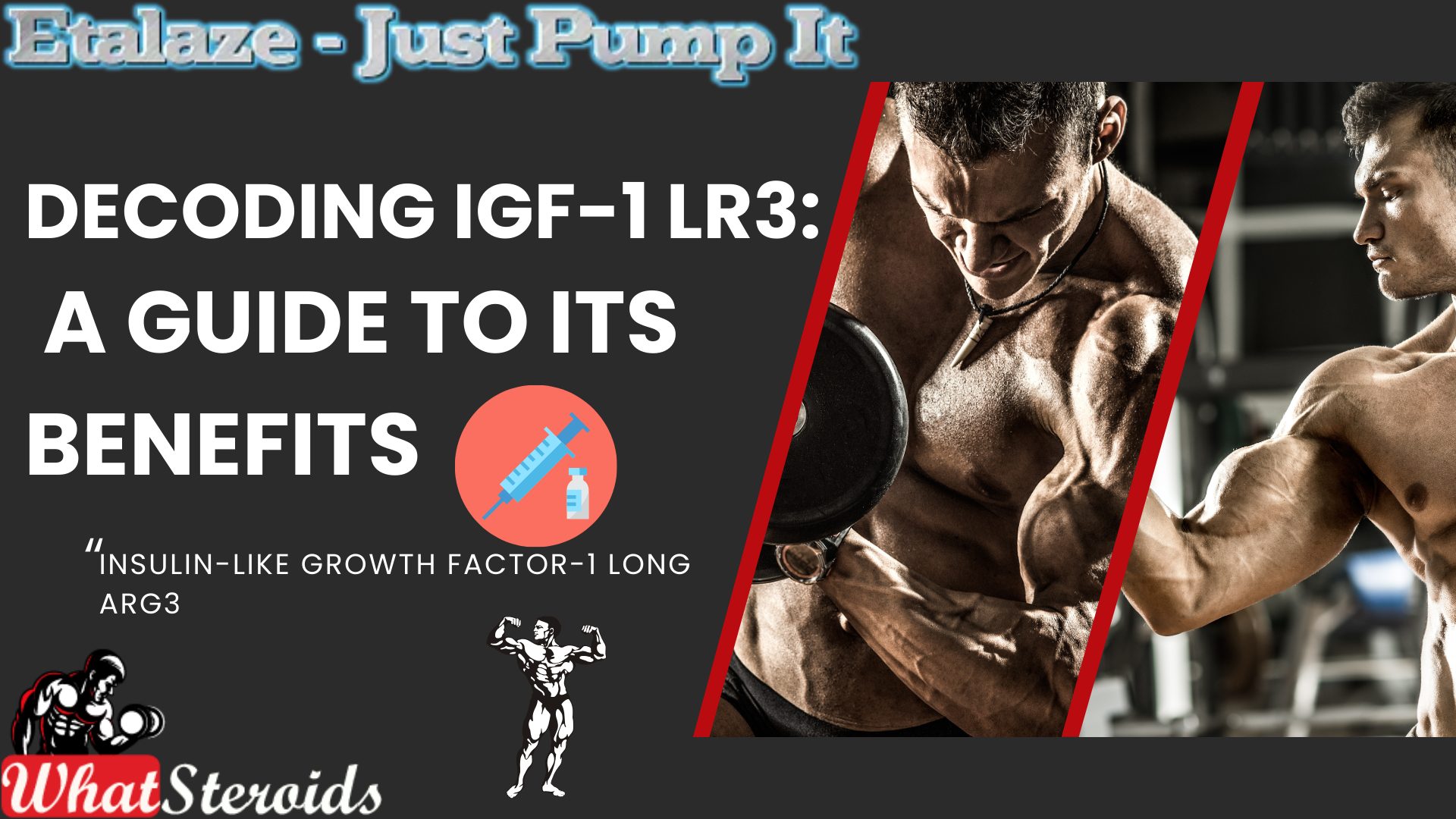
IGF-1 LR3 (Insulin-like Growth Factor-1 Long Arg3) is a synthetic variant of IGF-1, a hormone produced by the liver in response to growth hormone (GH). Unlike GH, which works indirectly, IGF-1 directly facilitates the growth and repair of muscle cells.
Related Article: Ostarine for Beginners; The Ultimate Guide
This modified version of IGF-1 is engineered to avoid binding with IGF-binding proteins, extending its half-life to 20–30 hours. As a result, it remains active in the body significantly longer than natural IGF-1.
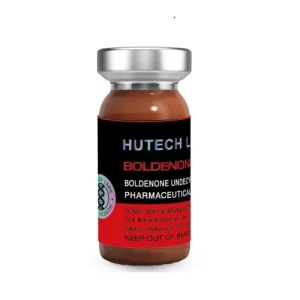 Click here to BuyBoldenone 300 by Hutech
Click here to BuyBoldenone 300 by Hutech
Many performance athletes incorporate IGF-1 LR3 post-workout to enhance muscle growth, speed up recovery, and support fat loss. When injected into specific muscle groups, it often produces localized effects. Additionally, it helps with nutrient distribution and, in some cases, improves insulin sensitivity.
On the other hand, human growth hormone (HGH) operates more broadly and indirectly, stimulating the liver to produce IGF-1 and offering more systemic benefits such as improved skin health, joint support, and fat reduction, albeit at a slower pace.
Typical IGF-1 LR3 doses range from 20–50 mcg daily, administered subcutaneously or intramuscularly, often following a workout.
Key Features of IGF-1 LR3
Enhanced Bioavailability: It avoids binding with IGF-binding proteins, increasing its potency.
Muscle Growth & Repair: Directly stimulates muscle cell proliferation and differentiation.
Improved Nutrient Distribution: Helps shuttle nutrients into muscle cells, supporting recovery.
Potential Fat Loss Benefits: Some users report improved insulin sensitivity and fat metabolism.
Mechanism of Action
IGF-1 LR3 interacts with IGF-1 receptors on muscle cells, activating pathways like PI3K-AKT and MAPK, which are crucial for cell growth and regeneration. This makes it a powerful tool for bodybuilders and athletes looking to optimize recovery and muscle development.
What Are the Top 10 Alternatives to IGF-1 LR3?
Here are some of the top alternatives to IGF-1 LR3, each with unique benefits for muscle growth, recovery, and performance:
BPC-157 – Known for its regenerative properties, it enhances healing and tissue repair.
CJC-1295 – A growth hormone-releasing peptide that boosts GH levels for muscle development.
Ipamorelin – Stimulates GH release with minimal side effects, making it a safer option.
MK-677 (Ibutamoren) – A potent GH secretagogue that promotes muscle growth and fat loss.
Sermorelin – Encourages natural GH production, supporting recovery and lean muscle gains.
Tesamorelin – Primarily used for fat loss, but also aids in muscle preservation.
Follistatin-344 – Inhibits myostatin, allowing for increased muscle hypertrophy.
PEG-MGF (Pegylated Mechano Growth Factor) – Enhances muscle repair and growth post-exercise.
GHRP-6 – Stimulates appetite and GH release, supporting muscle mass gains.
GHRP-2 – Similar to GHRP-6 but with fewer hunger-related side effects.
Each of these peptides has distinct mechanisms and benefits.
Must Read: Are Nootropics a Better Option to AAS?
Potential Risks Associated With IGF-1 LR3
IGF-1 LR3 comes with several potential risks, especially for bodybuilders using it to enhance muscle growth. Here are some key concerns:
Hypoglycemia (Low Blood Sugar) – IGF-1 LR3 increases glucose uptake in muscle cells, which can lead to dangerously low blood sugar levels if not managed properly.
Organ Growth – Since IGF-1 affects all tissues, excessive use may lead to unwanted growth in organs, increasing health risks.
Cancer Risk – IGF-1 plays a role in cell proliferation, and elevated levels have been linked to an increased risk of certain cancers.
Water Retention & Edema – Some users experience bloating and fluid retention, which can affect performance and aesthetics.
Joint Pain & Stiffness – Excessive IGF-1 levels may contribute to joint discomfort due to increased tissue growth.
Cardiovascular Issues – There is some concern that IGF-1 LR3 could contribute to heart enlargement or other cardiovascular complications.
Desensitization – Long-term use may reduce the body's natural IGF-1 production, leading to dependency
Overall
IGF-1 LR3's ability to bypass IGF-binding proteins makes it more potent but also increases the likelihood of desensitization with prolonged use. For those considering it, careful dosing and monitoring are crucial to mitigate side effects.
Steroids
AOD-9604: The Fat-Burning Peptide Explained
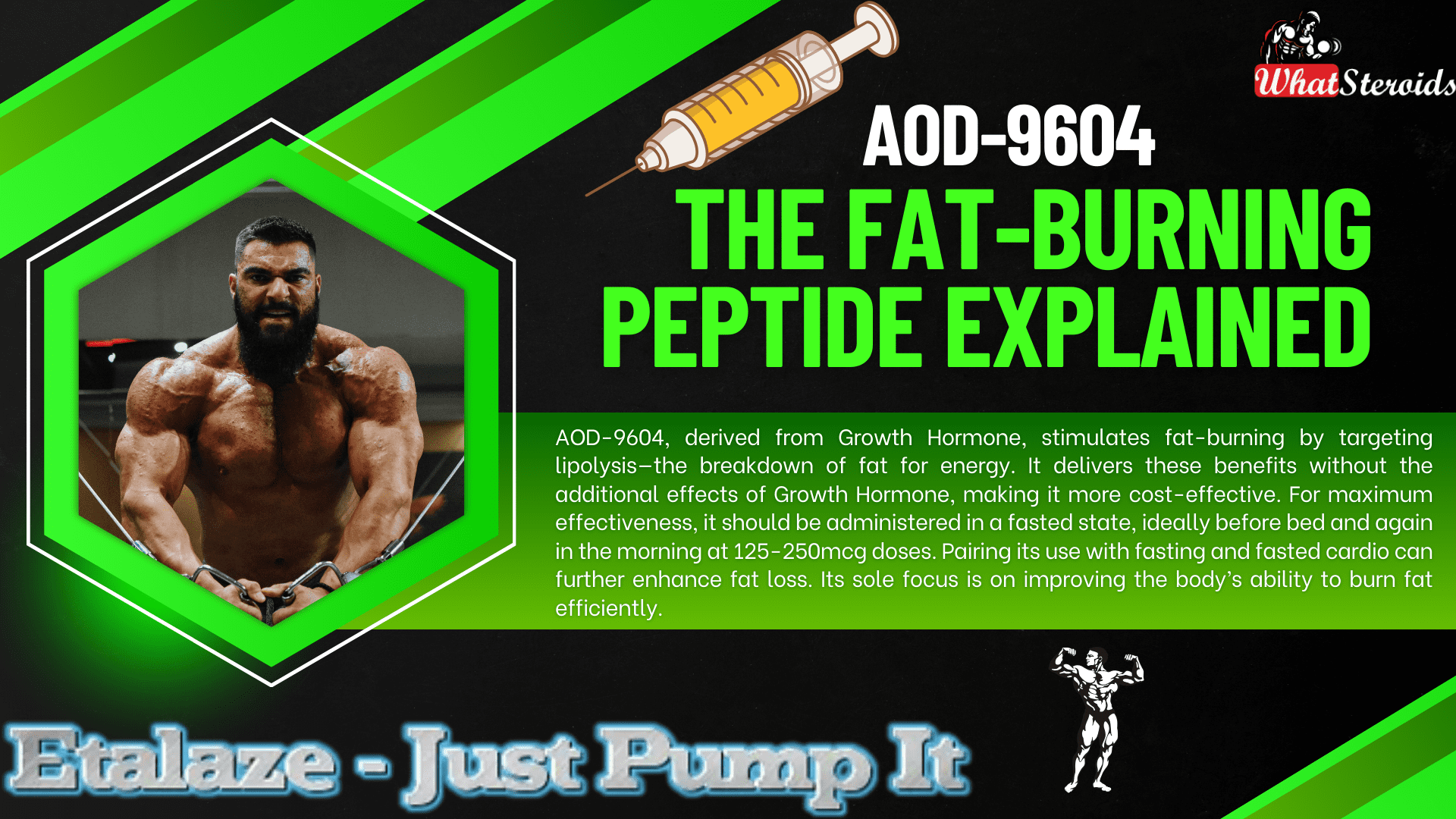
AOD-9604, along with the similar HGH Frag 176-191, is a peptide derived from Growth Hormone that includes only the amino acids in HGH responsible for stimulating fat breakdown, known as lipolysis.
This means that these peptides offer the fat-burning benefits of HGH without its other effects—whether beneficial or adverse—and come at a lower cost.
Related Article: Anavar Cycle for Men and Women
Lipolysis refers to the process where fat cells are broken down to be utilized as energy. AOD-9604 promotes accelerated fat loss by increasing the body's use of fat as fuel.
For optimal results, the peptides should be used in a fasted state. AOD-9604 and Frag 176-191 are most effective when administered at a dose of 125-250mcg before bedtime (at least 3-4 hours after eating) and in the morning at the same dose, followed by a fasting period of 3-4 hours, ideally combined with fasted cardio.
Check Out Dragontropin HGH 100 IU by Dragon Pharma
Similar Peptides with Fat-Burning Effect
Here’s a list of 10 peptides similar to AOD-9604, each with a brief description:
Ipamorelin: A growth hormone-releasing peptide (GHRP) that stimulates the natural release of growth hormone, promoting fat loss, muscle growth, and improved recovery without affecting other hormones like cortisol or prolactin.
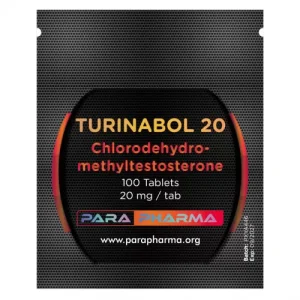 Click Here to Buy: Turinabol 20 by Para Pharma
Click Here to Buy: Turinabol 20 by Para Pharma
CJC-1295: A peptide that increases growth hormone and IGF-1 levels, aiding in fat loss, muscle gain, and improved sleep quality. It has a long half-life, making it convenient for users.
HGH Frag 176-191: A fragment of human growth hormone specifically designed for fat-burning. It targets adipose tissue without the broader effects of full-length HGH.
Tesamorelin: Known for reducing visceral fat, this peptide stimulates the release of growth hormone and is often used for weight management and metabolic health.
BPC-157: While primarily known for healing and recovery, BPC-157 can support fat loss indirectly by improving gut health and reducing inflammation.
Melanotan II: Originally developed for skin tanning, it also has appetite-suppressing properties, making it useful for weight management.
Thymosin Beta-4 (TB-500): Focused on healing and recovery, it can enhance physical performance and indirectly support fat loss through improved activity levels.
GHRP-6: A growth hormone-releasing peptide that boosts appetite and metabolism, aiding in muscle growth and fat loss.
Semaglutide: A GLP-1 receptor agonist that regulates appetite and blood sugar levels, making it effective for weight loss and metabolic health.
MK-677 (Ibutamoren): A growth hormone secretagogue that increases growth hormone and IGF-1 levels, promoting fat loss, muscle gain, and improved recovery.
List of Peptides With a Counteractive Effect Bodybuilders Must Avoid
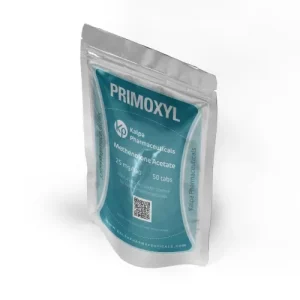 Click Here to Buy Primoxyl 25 by Kalpa Pharmaceuticals
Click Here to Buy Primoxyl 25 by Kalpa Pharmaceuticals
Some peptides can inadvertently lead to fat gain due to their effects on metabolism and appetite regulation. Here are a few that bodybuilders might want to avoid or use cautiously:
- GHRP-6 – While it stimulates growth hormone release, it also significantly increases appetite, which can lead to excess calorie consumption and fat gain.
- IGF-1 LR3 – This peptide enhances muscle growth but can also promote fat storage if not carefully managed with diet and training.
- MK-677 (Ibutamoren) – Though technically a growth hormone secretagogue rather than a peptide, it boosts GH levels but often leads to increased hunger and potential fat accumulation.
- CJC-1295 with DAC – While effective for muscle growth, its prolonged GH release can sometimes lead to unwanted fat retention if not paired with a strict diet
Overall
AOD-9604, derived from Growth Hormone, stimulates fat-burning by targeting lipolysis—the breakdown of fat for energy. It delivers these benefits without the additional effects of Growth Hormone, making it more cost-effective. For maximum effectiveness, it should be administered in a fasted state, ideally before bed and again in the morning at 125-250mcg doses. Pairing its use with fasting and fasted cardio can further enhance fat loss. Its sole focus is on improving the body’s ability to burn fat efficiently.
Read More: How Much Do You Know About B-AET? A Fat Burner You’ve Been Missing
Bodybuilding
Understanding Trenbolone-Induced Cough (“Tren Cough”)

Trenbolone, a potent anabolic steroid, can sometimes cause “tren cough”—a sudden and intense coughing episode shortly after injection. Although not exclusive to Trenbolone, it is more commonly associated with this substance due to its highly irritant nature.
 Click Here To Buy 1-Test Cyp 100 by Nakon Medical
Click Here To Buy 1-Test Cyp 100 by Nakon Medical
Mechanisms Behind Tren Cough
Solvent and Carrier Irritation
Trenbolone formulations often include volatile solvents like benzyl alcohol or benzyl benzoate, which may irritate lung tissues when absorbed quickly into systemic circulation.
Prostaglandin Release
Trenbolone promotes increased production of prostaglandins, particularly PGF2α. This compound triggers contraction in the smooth muscles of the lungs, leading to bronchoconstriction and coughing.
Micro-Oil Embolism
Tiny oil droplets from an injection can reach capillaries and travel to the lungs, causing mild embolic reactions that lead to temporary oxygen deprivation and coughing.
Histamine and Mast Cell Activation
For some individuals, Trenbolone triggers histamine release and mast cell activation, mimicking an allergic response and causing bronchospasms and cough reflexes.
Related Article: Best Syringes for Steroid Injection on Amazon
Using Salbutamol (Albuterol) to Manage Tren Cough
- Salbutamol, a widely-used β2-adrenergic receptor agonist, can alleviate tren cough symptoms by:
- Relaxing bronchial muscles, easing spasms that cause coughing.
- Inhibiting prostaglandin effects, reducing bronchoconstriction associated with PGF2α.
- Opening airways, preventing severe respiratory restrictions in susceptible individuals.
Application Methods
Inhaler (Optimal)
Take 1–2 puffs of salbutamol (100–200 mcg) 5–10 minutes before a Trenbolone injection. If coughing occurs afterward, additional puffs can swiftly resolve the issue.
Oral Tablets (Moderate)
Consuming 2–4 mg tablets 30–60 minutes before injection offers slower, longer-lasting relief but may be less effective than inhalation methods.
Nebulizer (Severe Cases)
For individuals with frequent episodes, nebulized doses of 2.5 mg salbutamol can provide substantial relief.
Preventive Measures to Reduce Tren Cough Risk
- Inject slowly to minimize systemic absorption and irritant effects.
- Split doses to lower reaction severity with smaller quantities.
- Opt for ventrogluteal injection sites, which have fewer blood vessels, reducing oil embolism risk.
- Choose lower-concentration solutions to lessen irritation, as higher concentrations (e.g., Tren Ace 200 mg/ml) are more likely to provoke reactions.
What Other Steroids Can Induce Coughing?
Here's a curated list of peptides, SARMs, and PEDs that may potentially cause coughing or respiratory irritation in bodybuilders and fitness enthusiasts:
Peptides
IGF-1 LR3 (Insulin-like Growth Factor): Known for its anabolic effects, IGF-1 LR3 can occasionally cause mild respiratory irritation due to systemic absorption.
TB-500 (Thymosin Beta-4): While rare, improper injection techniques or high doses may lead to transient coughing episodes.
GHRP-6 (Growth Hormone-Releasing Peptide): This peptide can stimulate histamine release, potentially leading to bronchospasms and coughing.
SARMs (Selective Androgen Receptor Modulators)
RAD-140: (Testolone) Some users report throat irritation or coughing, often attributed to solvents used in liquid formulations.
YK-11: Known for its myostatin-inhibiting properties, YK-11 may cause mild respiratory discomfort in sensitive individuals.
LGD-4033 (Ligandrol): Though uncommon, some users experience coughing due to carrier solvents or allergic-like reactions.
PEDs (Performance-Enhancing Drugs)
Boldenone Undecylenate (Equipoise): This injectable steroid can cause “Equipoise cough,” similar to tren cough, due to oil embolism or irritant solvents.
Testosterone Suspension: The water-based formulation may lead to coughing episodes if injected improperly or absorbed rapidly.
Nandrolone Decanoate (Deca-Durabolin): While less common, coughing can occur due to histamine release or systemic irritation.
More Tips to Minimize Coughing Risks
- Use proper injection techniques to avoid embolic reactions.
- Opt for lower-concentration solutions to reduce irritant effects.
- Consider antihistamines or bronchodilators for individuals prone to respiratory sensitivity.
Read More: Joint Stiffness: How to Manage It While on AAS
Are There Alternatives to Cough-inducing Steroids?
Here are some alternatives to cough-inducing steroids that can provide similar anabolic effects while minimizing respiratory irritation:
Peptides
IGF-1 LR3 (Insulin-like Growth Factor)
Promotes muscle growth and recovery without the irritant properties of certain steroids.
TB-500 (Thymosin Beta-4)
Enhances tissue repair and reduces inflammation, making it a safer option for recovery.
BPC-157 (Body Protection Compound)
Known for its healing properties, it supports muscle repair and joint health.
SARMs (Selective Androgen Receptor Modulators)
RAD-140 (Testolone)
Provides significant muscle-building effects with fewer systemic side effects compared to traditional steroids.
LGD-4033 (Ligandrol)
Boosts lean muscle mass and strength without the risk of respiratory irritation.
MK-677 (Ibutamoren)
Stimulates growth hormone release, aiding in muscle growth and recovery.
Natural Alternatives
Turkesterone
A plant-based ecdysteroid that supports muscle protein synthesis and recovery.
Ecdysterone
Another natural compound that mimics anabolic effects without the harsh side effects.
Creatine Monohydrate
Enhances strength and muscle mass through improved energy production during workouts.
Other Options
Human Growth Hormone (HGH)
Promotes muscle growth and fat loss, though it requires careful monitoring due to potential side effects.
Testosterone Boosters
Natural supplements like D-Aspartic Acid or Tribulus Terrestris can help optimize testosterone levels for muscle growth.
SARMs Alternatives
Legal and safer versions of SARMs are available, offering similar benefits without the risks associated with traditional SARMs.
Overall
We have explored the phenomenon of "tren cough," a sudden, intense coughing episode often caused by Trenbolone injections due to factors like solvent irritation, prostaglandin release, micro-oil embolism, or histamine activation. Preventive measures such as using salbutamol (via inhaler, oral tablets, or nebulizer), injecting slowly, splitting doses, and opting for lower-concentration solutions were highlighted.
Additionally, alternative compounds to tren cough-inducing steroids were discussed, including peptides like IGF-1 LR3 and TB-500, SARMs such as RAD-140 and LGD-4033, and natural options like Turkesterone, ecdysterone, and creatine. These alternatives provide anabolic effects while minimizing respiratory side effects. The conversation also underscored the importance of proper injection techniques and thoughtful compound selection to reduce risks.
-

 Steroids2 years ago
Steroids2 years agoShavers and Other Body Grooming Equipment for Bodybuilders In 2023
-

 Steroids2 years ago
Steroids2 years agoChatGPT and Other Avenues to Find Great Bodybuilding Coaches
-

 Steroids2 years ago
Steroids2 years agoBest Oil Recommendations Before Competition for Subtle Shimmer
-

 Nutrition2 years ago
Nutrition2 years agoEverything Nutritional Food: What’s Too Much Or Too Little
-

 Bodybuilding Products1 year ago
Bodybuilding Products1 year agoTelmisartan In Bodybuilding: An Expert’s Advice
-

 Anabolic Steroids1 year ago
Anabolic Steroids1 year agoLegality of Anabolic Steroids In Latin America
-

 Beginners2 years ago
Beginners2 years agoTren Cycle for Beginners
-

 Bodybuilding1 year ago
Bodybuilding1 year agoChia Seeds in A Bodybuilder’s Diet: An Expert’s Advice
-

 Bodybuilding8 months ago
Bodybuilding8 months agoPrimal Movements: Our Ultimate Guide for Maximum Results
-

 Anabolic Steroids9 months ago
Anabolic Steroids9 months agoJoint Stiffness: How to Manage It While on AAS
-

 Steroids12 months ago
Steroids12 months agoAnadrol Cycle: Benefits, Doses, Alternatives, etc.
-

 Bodybuilding1 year ago
Bodybuilding1 year agoList of FDA-Approved Peptides
-

 Bodybuilding2 years ago
Bodybuilding2 years agoCompetition Prep Cycle for Pro Bodybuilders
-

 Bodybuilding9 months ago
Bodybuilding9 months agoHow Effective is Bone Broth for Recovery?
-

 Steroids10 months ago
Steroids10 months agoOmnitope (Oxytocin)
-

 Bodybuilding1 year ago
Bodybuilding1 year agoHow Much Is Too Much Cardio? Understanding Heart Rate Zones
-

 Steroids9 months ago
Steroids9 months agoSleeping Positions for Effective Muscle Recovery
-

 Bodybuilding1 year ago
Bodybuilding1 year agoCalorie Dumping: A Bodybuilder’s Guide
-

 Bodybuilding8 months ago
Bodybuilding8 months ago2nd Edition of Natural Bodybuilding Competition Facts
-

 Anabolic Steroids12 months ago
Anabolic Steroids12 months agoHow Much Do You Know About B-AET? A Fat Burner You’ve Been Missing
-

 Bodybuilding1 year ago
Bodybuilding1 year agoDemystifying Hypertrophy Training
-

 Bodybuilding8 months ago
Bodybuilding8 months agoAre Nootropics a Better Option to AAS?
-

 Product Reviews11 months ago
Product Reviews11 months agoTop Vitamins for Skin Health
-

 Steroids4 months ago
Steroids4 months agoOstarine For Beginners: The Ultimate Guide
-

 Steroids11 months ago
Steroids11 months agoMajor Bodybuilding Peptides Explained


